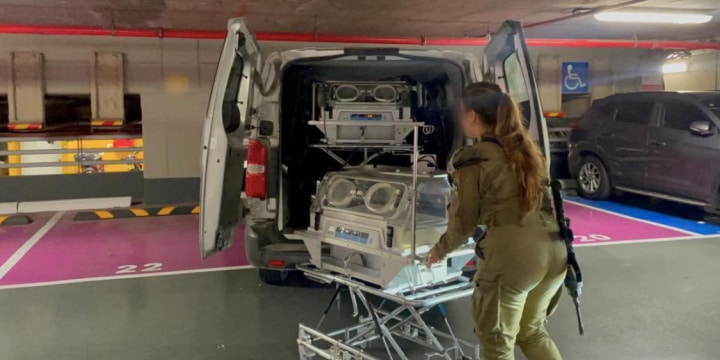Over the past month, fighting inside Gaza has continued as described in previous reports: low intensity guerrilla warfare. Hamas and other groups conduct small-scale raids or ambushes against Israeli units and Israeli forces reciprocate. Israel has withdrawn almost all its forces from the Gaza Strip, including those in the Khan Yunis area. At present, the only permanent Israeli presence is along a line separating the northern Gaza Strip and Gaza City from the rest of the Gaza Strip. Instead of establishing a permanent presence, Israeli forces have launched a number of large raids into areas they had previously vacated. The most important and successful of these was conducted at Shifa Hospital in Gaza City.
Acting on information that a group of terrorists had returned to Shifa Hospital to use its facilities, an Israeli force returned to the location and surrounded it. There were reportedly about 6,500 civilians in the hospital grounds, and at least 600 Hamas and Palestinian Islamic Jihad terrorists, including several high-ranking officials from the political, administrative ,and military organs of those organizations.
To facilitate the operation, the IDF opened an exit route for the civilians, which included a filtration passage that enabled the detection of terrorists as they attempted to use it to escape. Along the route, leading south from Gaza City along the coast, the IDF placed food and water supplies at a series of locations for civilians to take as they passed. Especially important, given the hot weather (above average for this time of year), was the water.
The Israeli forces operating in the hospital cleared a few buildings (special forces teams combed the buildings room by room) and then brought in medical equipment (respirators, surgical equipment, etc.) and supplies, as well as Israeli doctors and medical staff. They then helped the Palestinian medical staff transfer their patients from other buildings into the cleared ones, and combed the evacuated buildings as well. In two of the buildings fighting intensified as most of the terrorists inside conducted a defensive battle. They were armed with assault rifles, light machine guns, hand grenades and explosive charges, and used hospital machines and other medical equipment to build barricades. These are the two buildings that are shown as severely damaged in media reports.
Meanwhile, other forces from Hamas and Palestinian Islamic Jihad assembled from across their hideouts in Gaza City and attempted unsuccessfully to break through the Israeli cordon to reach the hospital.
The battle ended when the last terrorist inside the hospital had been killed or surrendered. All together, inside and outside the hospital about 210 terrorists (including a few suicide bombers) were killed and about 555 surrendered (another approximately 365 individuals were detained and released after it was clarified they were ordinary civilians). As noted, some of those arrested were high-ranking members of Hamas and Palestinian Islamic Jihad. No civilians were killed in the fighting. Large stockpiles of weapons were captured, as well as the equivalent of about $3.25 million in Israeli shekels, Jordanian dinars and American dollars. Three Israeli soldiers were killed, and a few dozen wounded during this battle.
The fact that so many terrorists, senior commanders and officials had congregated in the hospital suggests (as some of them admitted in video recordings of their interrogations) that they felt safe there and were completely surprised by the Israeli action.
Simultaneously with the hospital operation, a similar operation was conducted by Israeli forces in Khan Yunis. A neighborhood that had been taken, cleared and evacuated by Israeli forces was raided again, netting dozens of killed or captured terrorists who had returned to the evacuated area.
Also, over the past week Israeli forces have increased their raids into the Nuseyrat area in central Gaza, between Khan Yunis and Gaza City. To date, Israeli forces have not attempted to conduct a full-scale operation in this area, conducting only limited ground raids and air strikes. Since the last report more than six weeks ago, 15 Israeli soldiers were killed and approximately 1,000 Hamas and other armed groups’ terrorists were killed.
[The Algemeiner Report continues]
To summarize: there are definitely insufficient supplies of food in some areas inside the Gaza Strip, but not because of Israel. There are areas where food is sufficient, even plentiful. The problem is internal distribution, which is plagued by a mixture of incompetence, corruption and deliberate actions by Hamas.
Dr. Eado Hecht, a senior research fellow at the BESA Center, is a military analyst focusing mainly on the relationship between military theory, military doctrine, and military practice. He teaches courses on military theory and military history at Bar-Ilan University, Haifa University, and Reichman University and in a variety of courses in the Israel Defense Forces. A version of this article was originally published by The BESA Center.
View this The Algemeiner Report from July 28th

